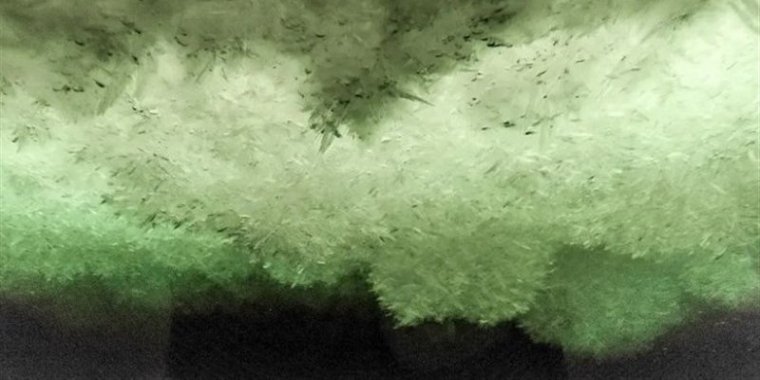| News / Space News |
Underwater Snow Gives Clues about Icy Shell of Jupiter’s Moon Europa
Bizarre underwater snow is known to occur below ice shelves on Earth, but new study shows the same is likely true for Jupiter’s moon. In fact, it may play a role in building Europa’s ice shell.

Underwater Snow Gives Clues about Icy Shell of Jupiter’s Moon Europa. Photo: tasnimnews.com
The underwater snow is much purer than other kinds of ice. This means Europa’s ice shell could be much less salty than previously thought.
That’s crucial information for mission scientists preparing NASA’s Europa Clipper spacecraft, which will use radar to scan beneath the ice shell to see if Europa’s ocean could be hospitable to life.
The new information is important because salt trapped in the ice can affect what and how deep the radar will see into the ice shell. Being able to predict what the ice is made of will help scientists make sense of the data.
The study was led by The University of Texas at Austin, which is also leading the development of Europa Clipper’s ice-penetrating radar instrument.
Knowing what kind of ice Europa’s shell is made of will also help determine the salinity and habitability of its ocean.
“When we’re exploring Europa, we’re interested in the salinity and composition of the ocean, because that’s one of the things that will govern its potential habitability or even the type of life that might live there,” said the study’s lead author Natalie Wolfenbarger, a graduate student researcher at the University of Texas Institute for Geophysics (UTIG) in the UT Jackson School of Geosciences.
Europa is a rocky world that is surrounded by a global ocean and a miles-thick ice shell. It is about the size of the Earth’s moon.
Previous research indicates the temperature, pressure, and salinity of Europa’s ocean nearest to the ice is similar to what you would find beneath an ice shelf in Antarctica.
Knowing this, the current research investigated the two distinct processes by which water freezes under ice shelves: congelation ice and frazil ice.
Congelation ice grows directly from under the ice shelf. Frazil ice forms as ice flakes in supercooled seawater which float upwards through the water, settling on the bottom of the ice shelf.
Both ways make ice that’s less salty than seawater. When scaled up to the size and age of Europa’s ice shell, Wolfenbarger found that the ice would be even less salty.
Moreover, according to her calculations, frazil ice – which keeps only a tiny fraction of the salt in seawater – could be very common on Europa.
That could mean its ice shell might be orders of magnitude purer than previous estimates. This difference affects everything from its strength, to how heat moves through it, and forces that might drive a kind of ice tectonics.
“This paper is opening up a whole new batch of possibilities for thinking about ocean worlds and how they work,” said Steve Vance, a research scientist at NASA’s Jet Propulsion Laboratory (JPL) who was not involved in the study. “It sets the stage for how we might prepare for Europa Clipper’s analysis of the ice.”
YOU MAY ALSO LIKE





